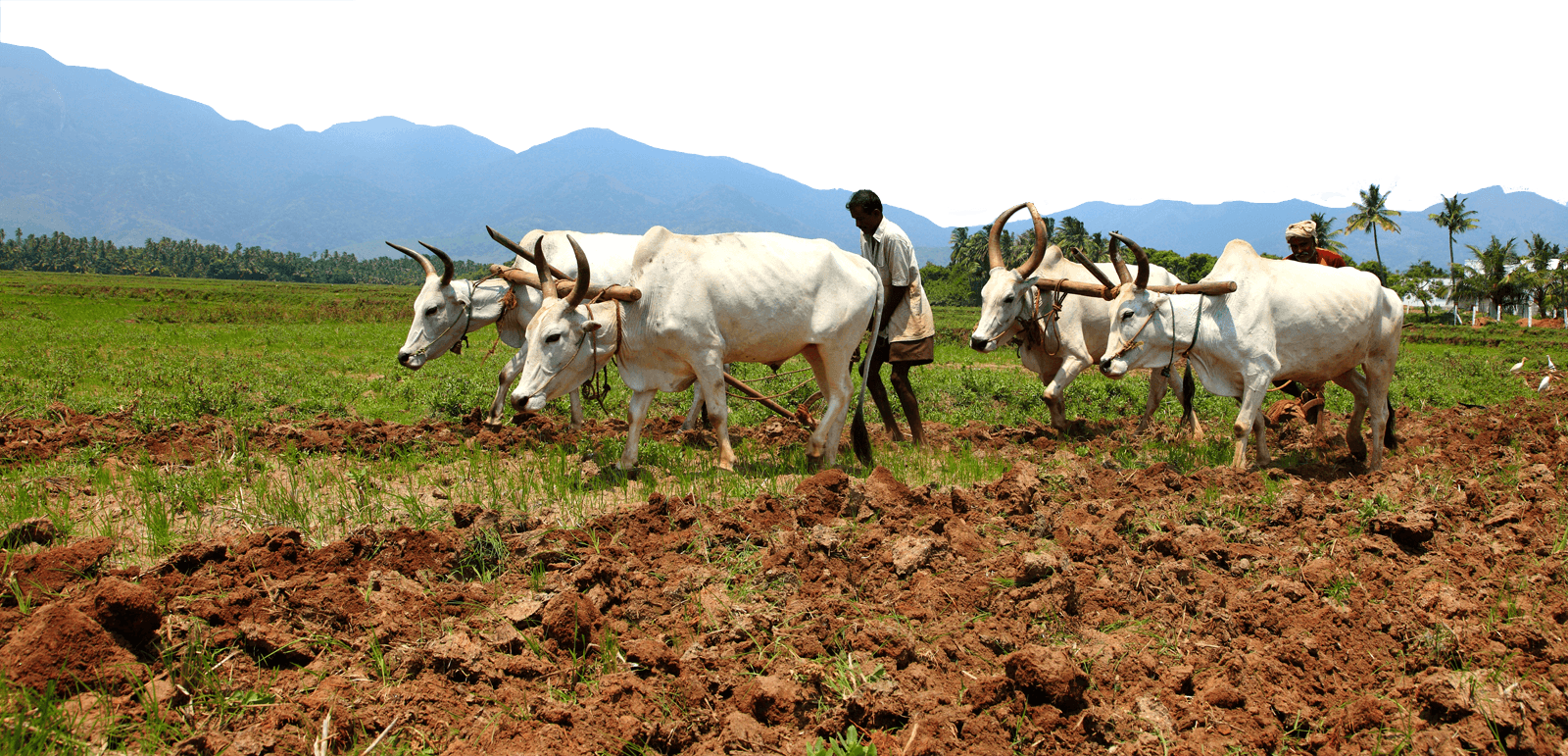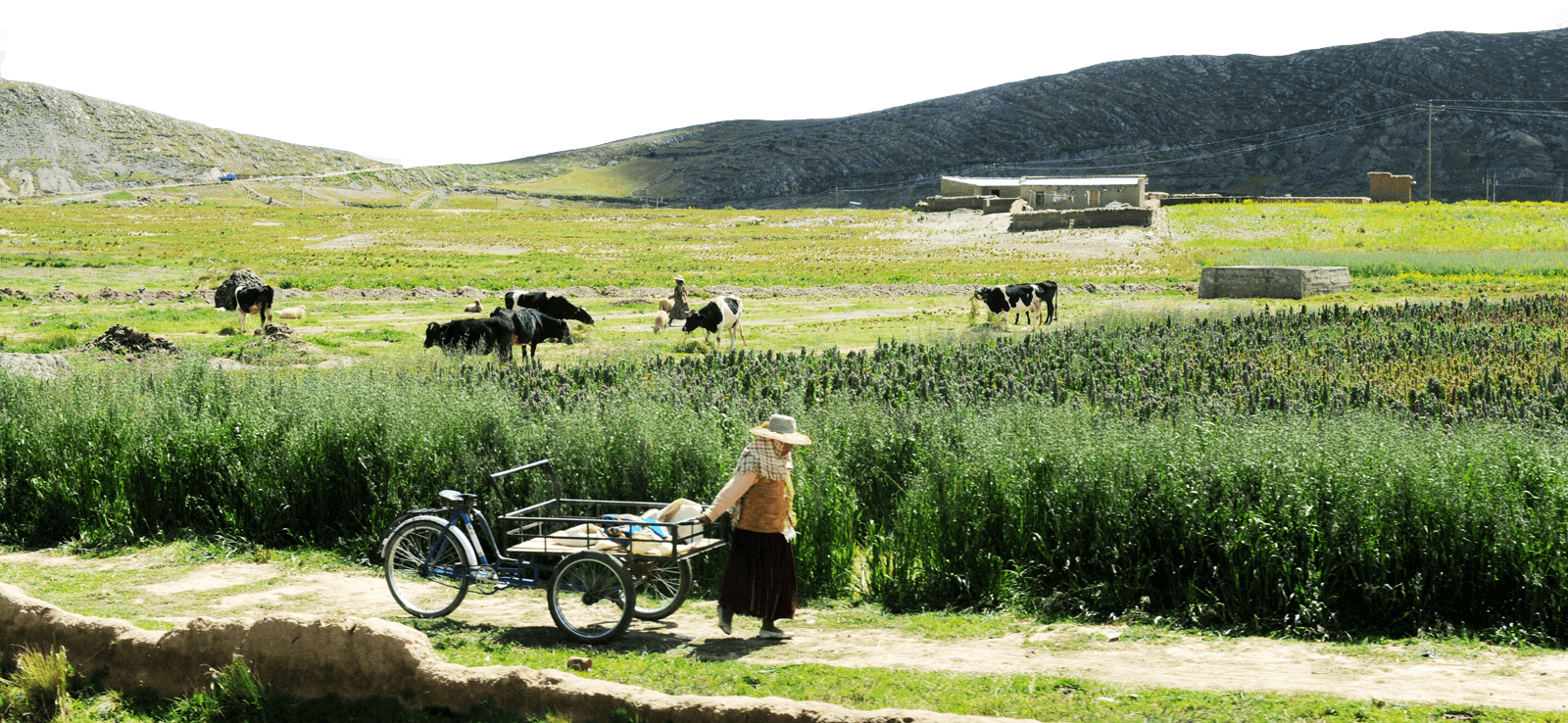Scaling Agroecology from the Bottom up: Six Domains of Transformation
Download and read the full Issue Brief as a PDF.
How can agroecology be advanced, amplified, scaled up and out? In each context, there are enabling and disabling conditions that shape the potential for agroecology to be scaled. This Food First Issue Brief identifies six ‘domains of transformation’ that are essential to consider in agroecology transformations.
Social movements, food producers, progressive researchers and other actors in civil society have long advocated for agroecology. More recently, agroecology is increasingly recognized by policy makers as an alternative paradigm for food and farming that can address multiple crises in the food system and enable a just transition.
The challenge ahead is to make agroecology grow from “islands of success” to “seas of change”. How can agroecology be nurtured, grown, massified, scaled up and out and strengthened on-farm, across and between territories, and throughout the food system? We refer to these political, ecological, cultural and economic processes as ‘agroecology transformations’.
Agroecology transformations are often messy, chaotic and non-linear. Through an analysis of existing cases and the wider literature on agroecology, we have distilled the aspects, drivers, dimensions and qualities that are critical to have in place in a particular community, territory or country in order for the greater spread and institutional recognition and support for agroecology.
Domains of Transformation
In a recent study, we identified six primary ‘domains of transformation’ (Figure 1) that represent arenas of struggle, where the dominant rules, culture, norms and dynamics contrast with those that would enable agroecological processes. Change in these domains are critical for increasing the potential for agroecological production practices and food systems. The domains are influenced by, and in turn influence, processes of governance. Our analysis thus affirmed the importance of addressing inequity, power and control – who gets to make what decisions – across each of the domains.
The six domains of transformation are:
Stay in the loop with Food First!
Get our independent analysis, research, and other publications you care about to your inbox for free!
Sign up today!- Access to Natural Ecosystems;
- Knowledge and Culture;
- Systems of Exchange;
- Networks;
- Equity; and
- Discourse
Within each domain, there are factors, dynamics, structures, and processes that constrain agroecology, and those that enable it (Figure 2). Below, we examine these dynamics within these domains and between them, as they are overlapping and interdependent.
Domain 1 – Access to Land, Seeds, Water and Biodiversity
Secure land tenure as well as access to and control over other elements of natural ecosystems have long shown to be vitally important for food producers’ livelihoods and agroecology. Other elements include, but are not limited to, the right to: water, ecosystem functions/synergies between wild and cultivated biodiversity, breeds, soil and soil quality, pasturelands, fisheries and forests, amongst other aspects of nature.
Conversely, inadequate and insecure access and tenure rights for various elements of natural ecosystems (unfortunately a reality in many places) increase vulnerability, hunger and poverty and undermines agroecology. The likelihood of conflict and environmental degradation is greater without these rights. And insecure access and control provides little incentive for farmers, communities, and territorial networks to invest in long-term agroecological approaches.
Excessive control by private interests, land fragmentation, soil degradation, climate change and water and land grabbing block the possibilities for agroecology. Other large-scale challenges to ecosystem access and use include armed conflict, climate change, and the “financialization” of agriculture.
In terms of how to support complex but needed reform processes around these issues, the Voluntary Guidelines on the Responsible Governance of Tenure of Land, Fisheries and Forests in the Context of National Food Security are a promising framework. Specific principles for implementation of the Guidelines include non-discrimination, equity and justice, including equal tenure rights and access to land, fisheries, and forests. Robust and inclusive governance that empowers communities, including especially the most marginalized, and that prioritizes rights to ecosystems is crucial, as is protecting customary and indigenous rights against the interests of those of local and international elites.
Land Grabbing Threatens Agroecology
In Senegal, land and water grabbing is threatening the spectacular achievements that farmers are making with agroecology. Farmer organisations are currently mobilizing to strengthen the governance of their communities and secure access to land and water for agroecology.
Domain 2 – Knowledge and Culture
Local and indigenous knowledge systems, culture and wisdom are critical in agroecology, because it is so embedded in local contexts and places. The way that knowledge is constructed, produced, shared, and mobilized is important in agroecology transformations. Questions come to the fore such as: whose knowledge is enabled through agroecology? Who are acknowledged and empowered as valid holders and producers of knowledge? This shapes the potential of transformations in agroecology. Such struggles over knowledge play out across research, innovation, education, learning, as well as in agroecological practices and policies.
To support agroecology, knowledge systems of agricultural producers, especially that of women and youth, need to be affirmed through networks of food producers and other collective processes and structures. This is mostly the case outside of formal (educational) institutions, in the networks, communities, and organizations of food producers. For example, horizontal processes of adult learning amongst food producers, often at a territorial level, have been central to the spread of agroecology. Such peer-to-peer, reflexive learning approaches are critical because they are often self-propelling, relevant to learners and support autonomy and independence.
When scientific knowledge is combined with local and traditional knowledge, powerful steps can be made for agroecology transformations. Unfortunately, mainstream knowledge, science and innovation systems generally privilege processes of outside, top down, expert knowledge transfer. They tend to focus on increasing productivity and generating commercial technologies. Agroecological experiences, however, demonstrate the importance of conducting scientific research in ways which are respectful of local dynamics, and are transdisciplinary, systems-oriented and participatory.
For generations, local, non-expert, and non-scientific ways of knowing have been invalidated and marginalized. Non-western, traditional, and women’s knowledge in some cases have been systematically erased. Decades of dominant, western-science-corporate-led development have depleted traditional ecological knowledge and practice in communities and has tied both food producers and food eaters (consumers) into dependency. This transformation cannot be simply addressed through ‘micro-’ processes of participatory research and development but requires a much wider process to confront the material, cultural, and spiritual legacies of colonialism.
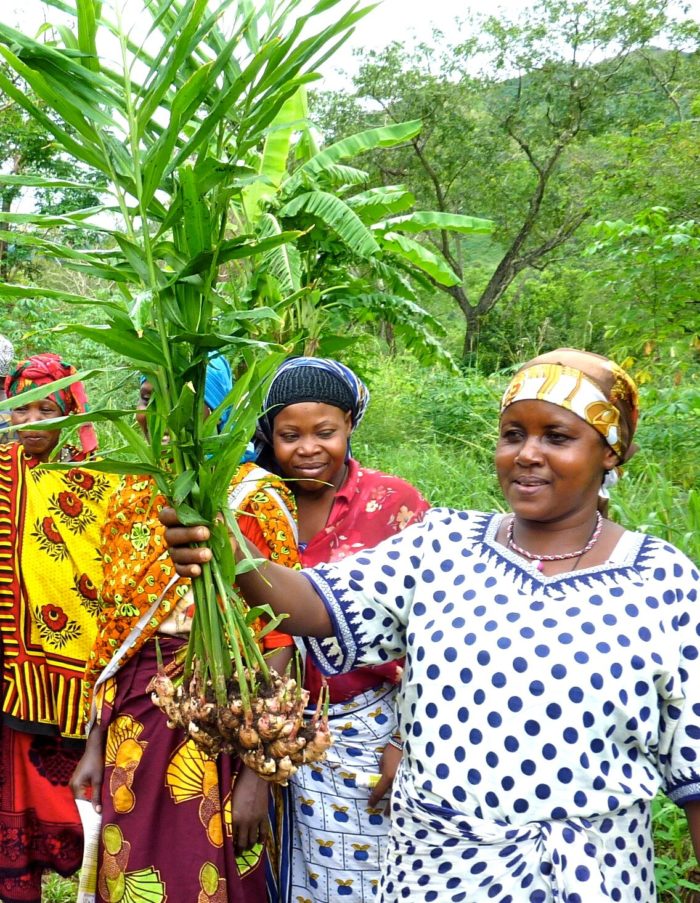
To support agroecology, the knowledge systems of (women) farmers need to be affirmed. Photo credit: AFSA
Finally, public investment in agroecology research and learning processes, as well as the active involvement of agroecological producers and civil society in determining public research spending and priorities can ensure adequate resourcing of knowledge production for agroecology.
Agroecology Training in Mali
The Coordination Nationale des Organisations Paysannes (CNOP) is a federation of 13 farmer organisation in Mali. Their training program builds capacity for peasant agroecology by bringing together farmers, pastoralists and fisherfolk to share information on agroecology practices and politics. There are over 458 farmer-trainers who themselves are part of cooperatives, national structures, regional groups who have trained over 15,000 people.
Domain 3: Systems of Exchange
The existence of appropriate and robust systems of exchange is an important enabler of agroecology. The extent to which these systems of exchange are accessible, fair, profitable, and fulfilling for food producers is critical for agroecology transformations.
Traditional systems of exchange (e.g., informal markets, barter systems, gifting, and family/self-provisioning) are, although undervalued, well suited for enabling agroecological food systems. At the same time, new markets, networks and processes such as community supported agriculture and participatory guarantee systems are being established around the world. They can enable agroecology particularly when they are embedded in local networks and territories, allow for producers’ self-determination and meet the material needs of food producers.
Participatory Guarantee Systems (PGS)
PGS are local quality assurance systems, where groups of food producers and food eaters agree on production methods, standards, and processes to self-certify their production. This is done through democratic processes, in some cases in collaboration with consumers. While PGS are relatively new and various issues are yet to be resolved, PGS are less expensive and can challenge the assumptions that underlie third party certification and labeling. These assumptions include the prioritization of export-oriented production and the idea that only formally trained outside experts can make valid assessments of quality.
Regrettably, mainstream food markets generally favor large volumes and standardization. They are reinforced by policies that emphasize economies of scale, strategic export commodities, and integration into global value chains, which many small-scale farmers cannot (or opt not to) engage in. Producers using agroecological approaches rarely produce the quantities or the uniformity of single agricultural products that these markets require. Efforts to make global value chains more “inclusive” correspondingly tend to benefit only a small number of farmers.
Agroecology also requires appropriate upstream systems of exchange, for inputs such as seeds, breeding stock, labor and tools, so farmers have access to the inputs that are not available on their farms. This often happens through a dynamic exchange within and between territories. However, concentration and consolidation of agricultural input markets and the lock-in of farmers into dependence on corporate input suppliers block agroecology transformations. Aided by government input subsidy schemes (e.g., for fertilizer), this has been repeatedly and empirically observed in farmers’ accelerated use of fertilizers, pesticides, commercial seeds, non-locally adapted livestock genetics, and imported feed.
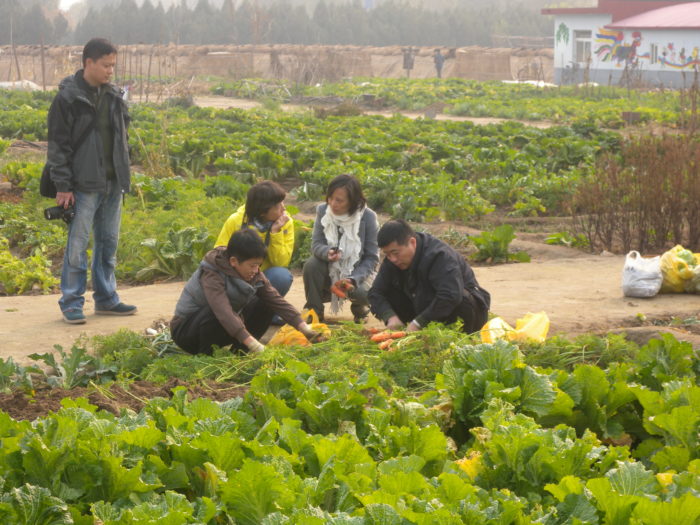
CSA members of Little Donkey farm (Beijing, China) harvesting carrots. Photo credit: Jan Douwe van der Ploeg
Whether ‘upstream’ or ‘downstream’, agroecology is best supported through “nested markets” that are embedded in democratic social relations, including between farmers and consumers, between the rural and the urban. This is why markets are closely linked to the domain ‘networks’ (see below). Examples are farmers’ markets, farm shops, self-harvest and vegetable box schemes. These markets thicken networks of solidarity and relations of reciprocity in territories. Profiteering intermediaries or “middlemen” are avoided. Nested markets value the ecological, social, economic, and political functions and outputs of agroecology, which is not the case in price-driven markets. Often, not only products but also cultural traditions, ideas, visions, and knowledge are exchanged making agroecology socio-economically and politically viable.
CSA in China
Community Supported Agriculture (CSA) is spreading around the world. For example, CSAs in China are increasingly popular among urban consumers. CSA and other markets for agroecology are building an alternative food production and distribution model, provide safe and healthy food to the cities and help to repopulate the countryside.
Domain 4 – Networks
Multi-actor networks are pivotal in strengthening agroecology. Knowledge, markets, discourse, inclusivity, and production practices in agroecology are all developed through networking and social organisation. Indeed, the depth and degree of social organisation in networks is key for bringing agroecology to scale. Formal and informal networks for agroecology exist in various forms, such as between farmers, between producers and consumers (see above) or between groups of agricultural producers and researchers. Networks can:
- enable the management and governance of agroecological territories;
- coordinate human skills, knowledge, influence and labour to generate wealth and economic exchanges in food systems
- aggregate lessons learned in agroecology;
- support coordinated action for policy and institutional change at multiple scales.
In agroecology, most networks are driven by civil society actors, such as producer organizations, communities, and social movements. Allies from government, academia, or other sectors often step in to support these networks at some point of the maturity of the network. Involving relative outsiders can increase the resources available to the network, such as knowledge, access to other networks, political influence, and finance.
However, linking up with public and private sector actors poses risks, since their agendas and priorities can change the nature of agroecological initiatives and the agency of networks, thereby moving away from the strength of self-organization. New actors must therefore be included in a way that avoids dependence. The question of equity related to class, gender, caste, religious, or race divisions also comes to the fore here, as any network needs to decide which actors are allowed “in” or “out”.
Global Networking
At the global level, the Nyéléni network brings together a diverse range of food producers, consumer constituencies, and academics around the promotion of agroecology and food sovereignty.
In many places, the options for organizing for agroecology are limited because political dynamics undermine or weaken the development of networks for collective action. There are also countries where the political context is outright hostile to dissenting networks and communities, and where social organisation is criminalized.
Another key barrier to developing effective multidisciplinary and multi-actor networks for agroecology is the compartmentalization of different aspects of the food system. Many institutions and organizations seeking change only focus on specific sectors (e.g., technology, seeds, markets, natural ecosystems and functions, health, production, consumption etc.), losing sight of the holistic approach that is at the heart of agroecology.
Domain 5 – Discourse
Discourse, or the ways in which language is used to frame debates, policy, and action, is a powerful mobilising tool. It is therefore a critical domain for agroecology transformations (Figure 3). There are a number of actors who shape discourse on agroecology including social movements, civil society, governments, the Food and Agriculture Organization of the United Nations (FAO) and other multilateral institutions, researchers, media, and the private sector.
These actors use a process called ‘framing’ to convey their interpretation of agroecology where they ‘simplify and condense’ its complexity. They emphasize key characteristics that align with their own views. They selectively present agroecology to support specific values, beliefs, and ideologies.
There are various frames that are supportive of agroecology transformations:
- Food Sovereignty: Discourses around food sovereignty, autonomy, and rights-based approaches to food and agriculture are critical for a transformative agroecology. These frames enable agroecology transformations which foster community self-organization and deepen the radical and political character of agroecology.
- Participation: Promoting greater participation of different social actors and local communities in shaping agroecology has helped the significant popular and institutional uptake of agroecology.
- Cultural resonance: Connecting agroecology with local cultural practices, worldviews, and spiritual traditions, has helped to mobilize support for agroecology, emphasizing for example how it is a culturally appropriate, place-based form of agriculture, such as in the case of the Buen Vivir worldview.
- Holism: Holism emphasizes the holistic nature of agroecology, breaking free from sectoral thinking. This frame points at its connections with other sectors, such as the environment, food, public health, economy, and social rights, making agroecology the appropriate strategy to address the complex, multiple crises in the world.
- Family farming: valuing the central role of family farmers and other food producers has been another important mobilizing frame for agroecology.
At the same time, several frames block, constrain or depoliticize agroecology. They maintain existing power relations by de-emphasizing or undermining the agency of communities and food producers.
- Feed the world: Often underpinned by an alarmist discourse on population growth, hunger, and climate change, powerful frames around the need to ‘feed the world’ solidify a singular emphasis on productivity and technology.
- Ecological modernization: The ‘feed the world’ frames have recently been infused with a discourse on sustainability (e.g. sustainable intensification and climate-smart agriculture). These frames reinforce policies that promote technological and market-based solutions for increasing food production, while attempting to selectively address environmental concerns. The wider social, cultural, political, and spatial dimensions of agroecology are obscured.
- Compartmentalization: Frames that diagnose food system problems in simplistic, sectoral terms constitute additional barriers to scaling agroecology. One example is presenting malnutrition as a pathological health issue, while ignoring deeper connections between public health, agricultural sustainability, ecosystem health, culture and democratic participation.
- Trivialization of farmers and farming: Finally, discursive frames that present smallholders and agroecology as irrelevant, can disempower and demobilize. These frames demotivate farmers to launch or expand agroecological experiments or from engaging in agriculture at all, and block institutional support. They attribute peasants, rural communities and farming generally with qualifiers such as ‘poor’, ‘backwards’, ‘ugly’, ‘inefficient’ and ‘unproductive’, while presenting large-scale producers and industrial agriculture as ‘modern’, ‘productive’, ‘tidy’ and representative of ‘good farming’.

Figure 3. Discourse around agroecology is shaped by nine primary frames which have implications for agroecology transformations
The Food Sovereignty Frame
According to the World Forum of Fisher Peoples, the practices and principles of agroecology as framed by food sovereignty are just as relevant in the context of small-scale fisheries as in other food producing sectors. Beside ensuring the ecological sustainability of their fishing methods and practices, small-scale, artisanal fishers are also engaged in various other agroecology strategies that fit the food sovereignty frame: defending their customary rights and traditional knowledge systems, claiming their self-determination, autonomy, and equity for women and youth, while also prioritizing local trade based on the principles of solidarity economy.
Domain 6 – Equity
Dynamics of marginalization and inequity, from international policy arenas to the household level, and along the intersecting dimensions of gender, age, class and caste, religion, health, and race, pose a major barrier to the development of sustainable food systems. At the same time, efforts to address intersectional equity are essential to enable transformation through agroecology. In the absence of a focus on equity, efforts to advance agroecology risk exacerbating inequity.
Gender inequity is a particularly critical barrier to agroecology transformations. Women generally have less access to productive resources and decision making, while still being disproportionately responsible for the household, caretaking, and agricultural tasks. In numerous countries, the effective participation of women in agroecological innovation processes has been blocked in a variety of ways, including through violence—from the symbolic to the psychological and the physical.
Women however often play crucial roles in agroecology. In many communities, they are the guardians of seeds and local breeds, with specialized knowledge and skills for preserving and using them for food, feed, spiritual and medicinal purposes. They often bring holistic and nutrition-centered views that combine responses to economic, health, environmental, and social needs. Studies have shown that improved gender equality and a stronger position of women can therefore be a driver of improved nutrition, and increase on-farm diversity and other aspects of agroecology.
But the dominant agricultural development model ignores and undermines the important role and knowledge of women and other systematically marginalized actors in agriculture and rural communities. Gender also intersects with almost all other forms of inequity. For example those related to peasant status, caste, class and religion. Along with aggressive large-scale land acquisitions worldwide and rising food prices in many places these have weakened the position of rural women even further. Policy blindness to these inequities and related attitudes supports and maintains conditions of inequity and patriarchy.
Since norms and perceptions that shape gender relations evolve jointly with changes in the production system, agroecology itself can be an instrument for gender equity and women’s self-empowerment. This emancipatory potential is tied to agroecology’s emphasis on local and diversified knowledge, skills, and tasks; input-independence; and co-creation. Women’s participation in decision making at the household and community level is often both an essential prerequisite for and a result of agroecological innovation. Thus, agroecology can provide spaces for men, women and people of all gender identities to work in solidarity and improve equality in decision-making, livelihoods, income, and agency.
Nevertheless, agroecology does not change gender relations by itself. Therefore, explicit strategies for women self-empowerment are needed alongside any agroecology initiative. Initiatives that were successful in transforming gender relations in agrifood systems have evolved around iterative, dialogue-based, and women-led organization, decision making and experimentation with agroecological practices such as diversification, intercropping, nutrition education, and marketing innovations.
As with gender, agroecological approaches can also contribute to addressing other kinds of inequitable social relations. This can only be done if agroecology is combined with a greater emphasis on inclusive, people-centered development; better policy monitoring and implementation; decentralization, greater participation and investment in those who are marginalized and excluded; strengthening local capacity, accountability and transparency of governments; and stronger governance and implementation of the rule of law at all levels.
Women Build Autonomy with Agroecology
A strong network of women farmer-innovators in Paraíba, Brazil has been driving fundamental change in the lives of hundreds. Collective learning has brought rural women out of their isolation and into positions of leadership. The success of the women’s movement lies in its link between experimentation with agroecology and reflection on inequity.

Figure 4. Each of the circles represents a domain of transformation. On the left side, the small overlapping space between domains reflects a situation of largely disabling conditions for agroecology. As domains start to overlap and enabling conditions in each domain become more robust and aligned, a greater potential for durable, widespread and deep agroecology transformation ensues (right)
Conclusion
In order to maximize the potential of agroecology transformations it is vital to avoid reducing action to singular domains—such as, for example, only creating new markets (a common refrain). Instead, efforts to support agroecology transformations should consider and support transformations at the intersection and overlap of two or more of the six domains.
It is important to reiterate the complementarity between the domains of transformation. When processes of transformation in several domains start to overlap and become ‘tied’, the opportunities for wider transformation — in a geographical location or across the food system — are amplified. Figure 4 illustrates how action in one of the six domains can reinforce action in other domains to support the development of agroecological practices and further the transformation of the wider food system.
Agroecology transformation isn’t about a grand singular theory of change, but rather is the recognition of a participatory and adaptive process that is tailored to and appropriate for particular contexts. Efforts for agroecology transformation will therefore start in different domains in different places, and be shaped in a variety of ways.
Most likely, they will be met with systemic inertia and intentional, even violent, resistance. This underpins the importance of collective action, social movements, and solidarity networks as a means of building and amplifying political power and community agency.
This is easier said than done. But, given the threat of climate change and biodiversity loss, ongoing disempowering dynamics, and continued widespread challenges to food and nutrition security, it appears to be the most viable pathway to agroecology transformation for sustainable and just food systems. Around the world, people are showing that it can be done.
This is part one of a two-part series based on a recently published, longer journal article. To cite the full article:
Anderson, C. R., Bruil, J., Chappell, M. J., Kiss, C., & Pimbert, M. P. (2019). From Transition to Domains of Transformation: Getting to Sustainable and Just Food Systems through Agroecology. Sustainability, 11(19). doi:10.3390/su11195272

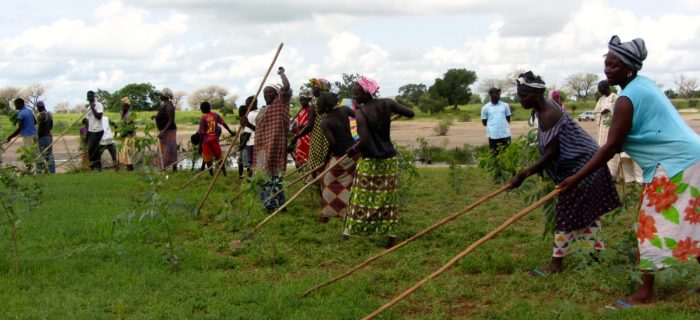
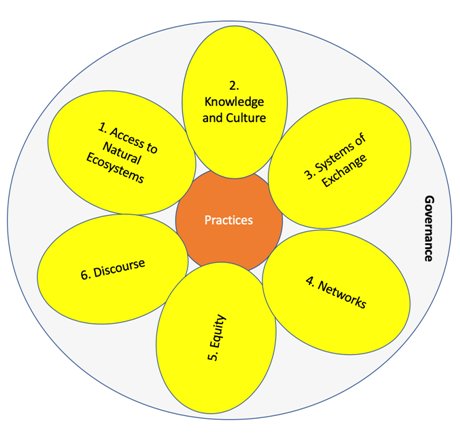

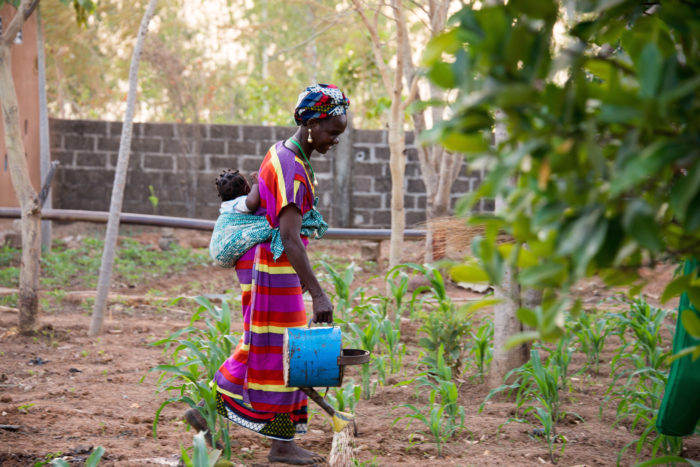
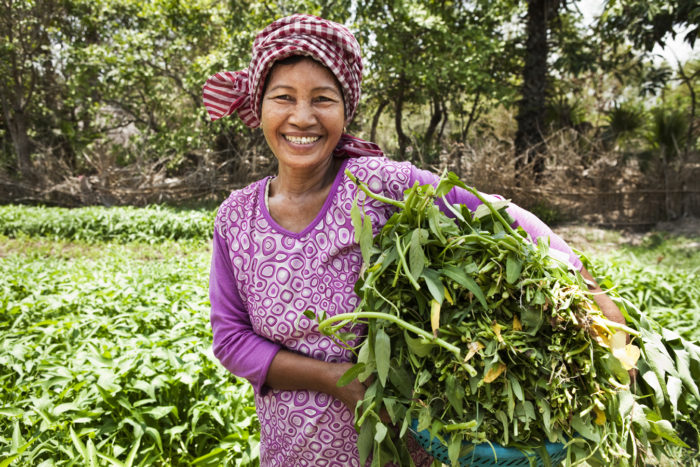
 Help Food First to continue growing an informed, transformative, and flourishing food movement.
Help Food First to continue growing an informed, transformative, and flourishing food movement.

